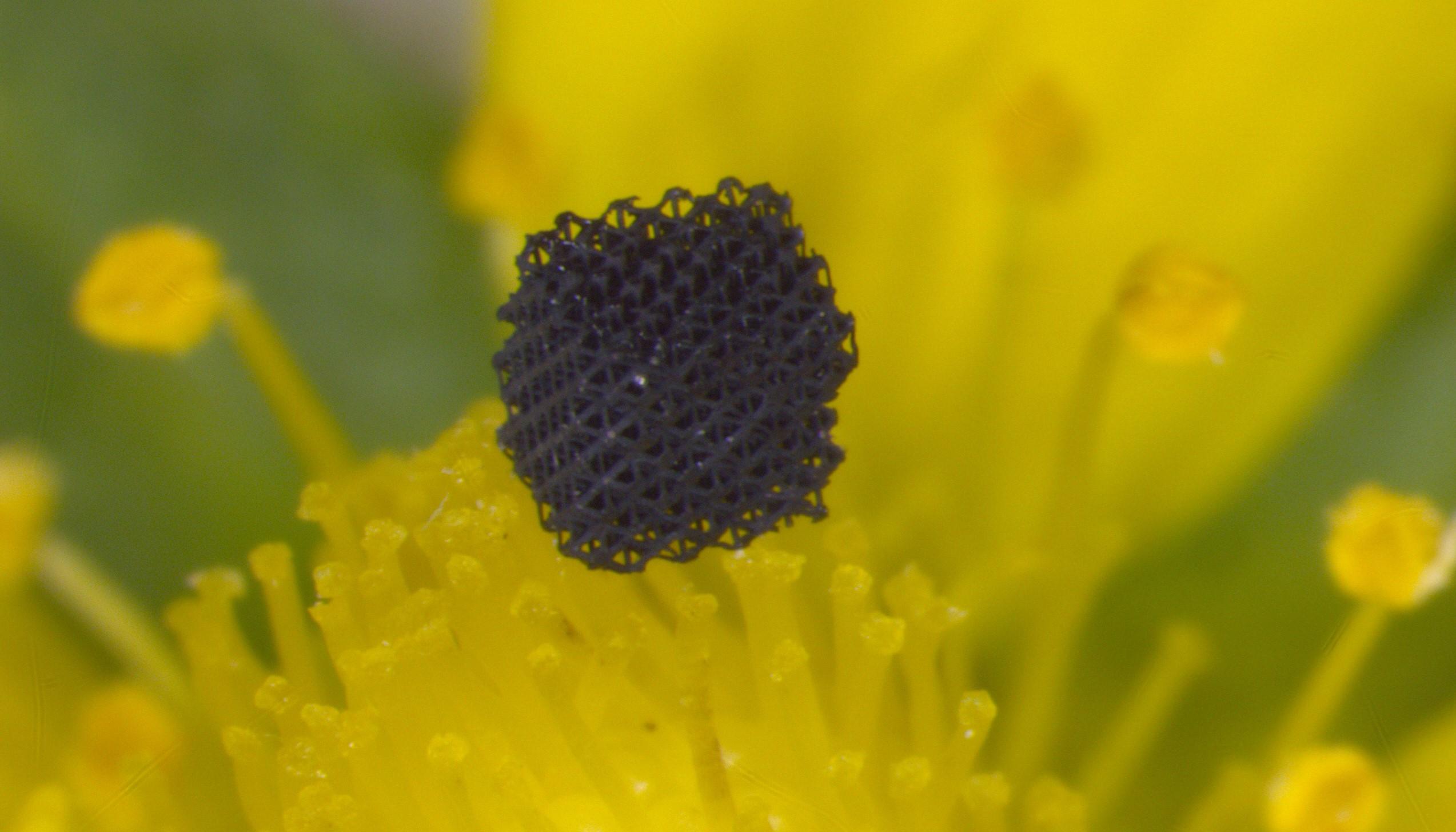Graphene is a two-dimensional material that offers a unique combination of exceptional mechanical properties, large surface area, and excellent electrical conductivity. The extension into three-dimensional graphene (3DG) foam assemblies, however, has been hampered by significant degradation of these properties particularly when scaling to lower densities. While existing 3D printing methods (e.g., extrusion, ice-templating, laser templating, casting) have produced 3DGs, these techniques only allow limited structural control and printed features are macroscale in size; no current technique has been able to create graphene with arbitrary, highly connected three-dimensional form factors and microscale features to truly bring the benefits of 3D micro-architectures to 3DGs. Existing methods have all fallen short in achieving a truly arbitrary design space due to limitations in both the printing technique (e.g. toolpath requirement, serial writing) and feedstock materials which are typically not self-supporting. Present 3DGs are still constrained to only a few bending-dominated design geometries (woodpile, square array etc.) and relatively large ligament feature sizes (>100 μm), which preclude the vast design freedom to create 3D graphene mesoscale architectures for applications in energy storage and conversion.
To overcome challenges that existing techniques for creating 3DGs face, LLNL researchers have developed a method that uses a light-based 3D printing process to rapidly create 3DG lattices of essentially any desired structure with graphene strut microstructure having pore sizes on the order of 10 nm. This flexible technique enables printing 3D micro-architected graphene objects with complex, high-resolution form factors unparalleled by previous graphene 3D printing techniques. These materials can be designed to have improved mechanical properties when scaling to lower densities due to the tighter control of its three-dimensional hierarchical micro-architecture afforded by LLNL’s invention.
R. M. Hensleigh , H. Cui , J. S. Oakdale , C. Y. Jianchao , P. G. Campbell , E. B. Duoss , C. M. Spadaccini , X. Zheng and M. A. Worsley., Mater. Horiz., 2018,5, 1035-1041 (https://pubs.rsc.org/en/content/articlepdf/2018/mh/c8mh00668g).
Three-dimensional graphene are ultra-light, possess large surface area, and maintain superior electrical conductivity. LLNL’s novel method for additive manufacturing 3DGs could greatly expand their micro-architectural design space.
The market for conductive, strong high energy density feedstocks will be present as additive manufacturing becomes more sophisticated. Market areas include energy storage, catalysis, capacitor, desalination, filtration, separations, insulation, and sorbents
Current stage of technology development: TRL 3
U.S. Patent Application No. 2021/0237344 Additive manufacturing of hierarchical three-dimensional micro-architected aerogels published 8/5/2021


